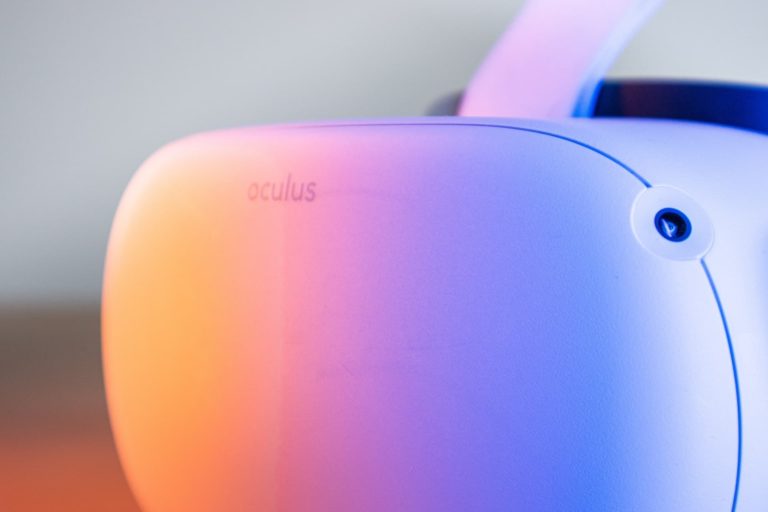
VR has made waves in various industries — including cinema, gaming, and even education — for several years. But it also has the potential to improve the retail supply chain. With the rise of e-commerce and the need for improved customer experiences, VR can play a significant role in the way retailers operate. Here are a few…
1. Virtual Storefronts
What if you could test out products without actually leaving your home? Virtual storefronts allow customers to interact with products as if they were in a brick-and-mortar store. According to ARtillery Intelligence, 25 percent of U.S. adults have tried VR, and 35 percent of those are interested in using the technology for immersive shopping.
VR creates an immersive experience for consumers, allowing them to view products and get a sense of their size, shape, and appearance — if not their weight or taste. Although it can’t replicate the experience of testing perfume samples at the mall, VR shopping can still create more engaging, personalized shopping experiences that increase customer loyalty, upselling, and cross-selling opportunities. VR helps retailers reach new target audiences.
Virtual shopping could also reduce retailers’ need for storage space. People already buy countless online items sight unseen, and VR could take online retail to the next level by further reducing the need for physical storefronts. That saves significant money on packaging, shipping, and product display, allowing manufacturers to ship their products directly to customers.
For example, IKEA’s virtual reality showroom lets customers walk around and check out furniture in a convenient, accessible way, visualizing what that wraparound sofa might actually look like in their house. People can virtually test products without getting lost in the labyrinthine halls of an IKEA warehouse.
2. Product Design and Development
VR can also help retailers improve product development. Retailers can design and test prototypes in virtual environments to evaluate the models without the time, money, and labor required to build a physical product. This technology allows retailers to catch flaws and make improvements early in the research and development process.
Additionally, VR can enable customers to share feedback on products early in development — it’s much easier than assembling a team of product testers and having them sign liability waivers. Retailers can use this feedback to improve their product designs and provide a better customer experience.
3. Identifying Inefficiencies
A crucial aspect of supply chain management is to look for ways to improve efficiency. VR technology can provide real-time visibility into the supply chain, allowing retailers to spot potential problems and take action before they become significant issues.
For example, managers working off-site — even in another country — can use VR to see the layout of their warehouse or factory, giving them a sense of how to run the business. They might realize the workplace computers are too far from the manufacturing floor and causing employees to waste time walking back and forth. Once they identify this problem, they can remedy it by moving the computer station or giving employees tablets instead.
VR can be used in conjunction with other retail supply chain technologies like a retail management system (RMS) or enterprise resource planning system (ERP). These solutions already identify and remedy inefficiencies, with 82% of customers who implemented an ERP system seeing an increase in business process management. Combining these results with VR technology provides even more efficient operations. For example, DHL included smart glasses in their operational processes and saw a 15% increase in productivity.
4. Immersive Training
Walmart has been using Oculus VR headsets to train its employees since 2017. VR training allows workers to practice their skills in a virtual environment, lowering costs by reducing the need for physical training facilities. It allows a large group of employees to get the same point of view during a presentation and participate in tasks without taking turns.
VR training can also take the pressure off when people are learning how to interact with customers. Walmart currently uses the VR program to teach its retail employees compliance, new technology and soft skills.
In addition to VR, augmented reality (AR) is improving employee training in the retail sector. For example, employees can don Google Glass to see a text-based overlay in their field of view, which is especially helpful for deaf employees. It can provide real-time instructions for how to navigate the warehouse, repair a broken tractor wheel or sort items into the proper packages.
Many companies have already adopted Glass for employee training and ongoing support. AR glasses can also identify safety hazards like broken glass, chemical spills or smoke as well as provide instructions on dealing with them.
Just the Beginning
Virtual reality has the potential to completely change the retail supply chain. From virtual storefronts to improved customer experiences, there are countless ways for retailers to take advantage of the technology. As VR continues to develop, it will likely become commonplace for retailers to adopt the technology to enhance their operations and improve their bottom line.

Devin Partida is Editor-in-Chief of Rehack and editorial contributor at AR Insider. See her work here and follow her @rehackmagazine.






